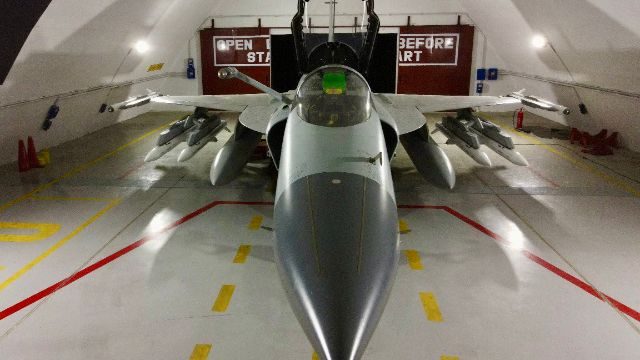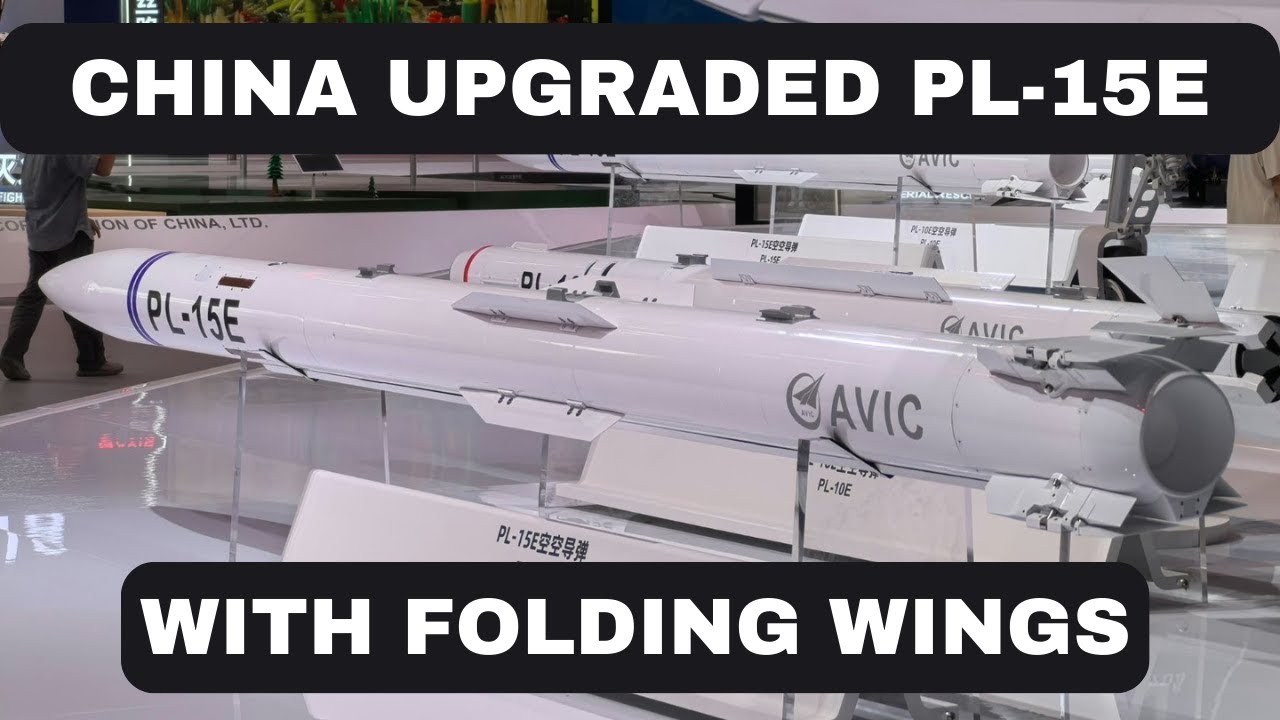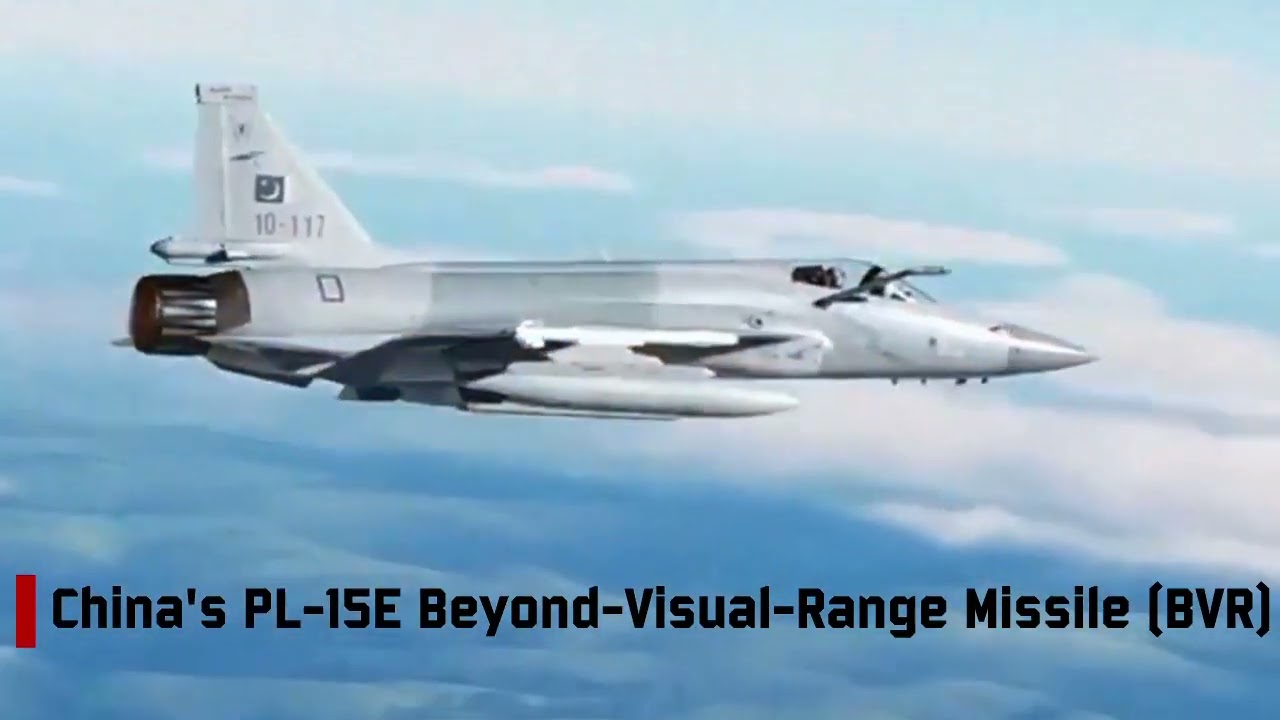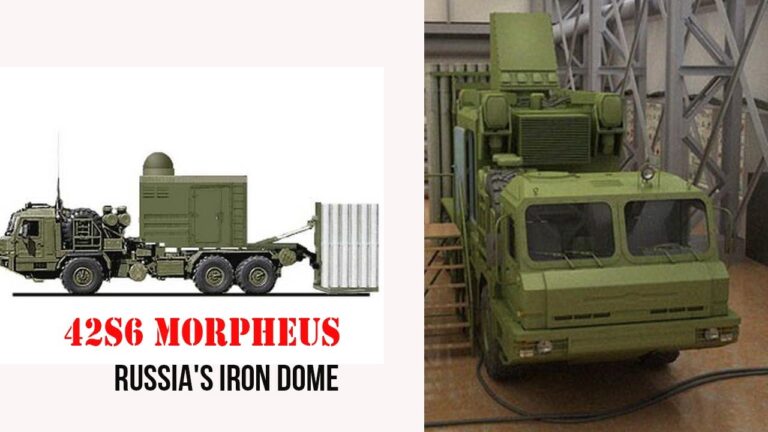
JF-17 Block III with PL-15 Missiles
In a region with nukes and advanced air forces, one weapon delivery can shift the balance of power. This week, a post on X from the STRATCOM Bureau claimed that China sent PL-15 missiles to Pakistan’s JF-17 fighters. The delivery reportedly came in response to growing tensions between India and Pakistan.
If true, it shows China acting fast and stepping up as a key South Asian ally. Although no official sources confirmed it, the report highlights Beijing’s readiness to support allies during tense moments.
This type of swift support could reshape regional power dynamics and force global players to rethink their defense strategies.
The STRATCOM Bureau’s post included a photo of a JF-17 said to be armed with a PL-15. The post described the move as a rapid, strategic response to India-Pakistan tensions. It claimed the missiles came from China’s own air force, not the export-limited PL-15E.
Gold Standard
This detail suggests China supplied Pakistan with full-strength versions from active military stockpiles. The post called China a “gold standard” ally, highlighting its rapid and calculated support.
Social media claims need scrutiny, but the post aligns with China’s growing pattern of helping Pakistan militarily. This delivery, if real, proves how advanced China’s logistics and military supply chains have become.
Most arms deals take months or years—this one appeared almost instant. Such speed points to close coordination between Beijing and Islamabad behind the scenes.
The U.S. showed similar speed in 2022 by quickly sending Javelin missiles to Ukraine. That rapid aid came just days after Kyiv requested help against Russian forces. However, the West rarely discusses China’s actions, despite their equal importance.

PL-15 Missile
With the help of state-backed conglomerates like the Aviation Industry Corporation of China, Beijing’s defense industry has increased production and streamlined supply chains, making it much better able to meet the needs of allies. With this skill, China becomes a strong player in the global arms race, competing with traditional arms suppliers like the US and Russia.
The reportedly delivered PL-15 missile plays a crucial role in modern air combat, capable of striking targets at enormous distances. The PL-15 is an active radar-guided missile made by China’s Luoyang-based China Airborne Missile Academy. It has a range of 120 to 190 miles and is powered by a dual-pulse solid-propellant rocket motor.
Its active electronically scanned array radar seeker and two-way data datalink make it possible to precisely target and make course corrections in midair.
This capability makes it a useful weapon against swift fighters, bombers, and high-value assets like airborne early warning and control aircraft.
The missile’s cropped fins make it small enough to fit inside the weapons bays of stealth fighters like China’s J-20. When combined with the JF-17 Block III, which has the advanced KLJ-7A AESA radar, it makes Pakistan’s ability to fight at long ranges even better.
No-Escape Zone
People say that the PL-15’s range and maneuverability are on par with or better than those of Western weapons, like the U.S. AIM-120D AMRAAM, which has a range of about 100 miles, and the European MBDA Meteor, which is known for its ramjet propulsion and large “no-escape zone.”
The addition of the PL-15 to its JF-17 fleet has significantly enhanced Pakistan’s air combat capabilities. Over 130 JF-17 Thunder fighters are in service with the Pakistan Air Force.
Pakistan’s Aeronautical Complex and China’s Chengdu Aircraft Corporation developed this lightweight, single-engine, multirole fighter.
The Block III version, which came out in 2020, has more advanced electronics, a three-axis fly-by-wire system, and the KLJ-7A radar, which can track 15 targets at once and attack four of them.
With the PL-15, the JF-17 can now threaten high-value Indian assets from a safe distance, like AWACS platforms or refueling tankers. This capability has made India rethink its air defense plans.
It is especially important to have this skill in South Asia, where air superiority often decides the outcome of battles along the disputed Line of Control in Kashmir.
MBDA Meteor
To understand what this means for strategy, it’s helpful to look at the PL-15 in light of India’s air-to-air missiles. The Astra Mk-1, India’s main beyond-visual-range missile, can only go about 68 miles, which is a lot less than the PL-15’s range.
Still under construction, the Astra Mk-2 will extend this range to 100 miles, but it is not yet operational. It also uses the MBDA Meteor on its Rafale jets.
The Meteor is a missile with a range of about 120 miles and a reputation for having a large “no-escape zone” because of its ramjet engine.
The Meteor remains powerful, but Pakistan’s longer-range PL-15 could strike before Indian jets can react. If STRATCOM’s claims are true, Pakistan may have received a PL-15 variant that exceeds the 90-mile export limit. Such capabilities could further destabilize the region and shift the aerial balance.
India may now speed up its missile programs or look to buy long-range options like Russia’s R-37M. That missile has a range of up to 250 miles and could help India restore its reach. This delivery reportedly occurred amid rising India-Pakistan tensions, especially over Kashmir.
Bulgarian outlet Fakti.bg
A recent attack in Kashmir killed 26 tourists, according to Bulgarian outlet Fakti.bg, heightening regional hostility. India responded by revoking Pakistani visas and expelling diplomats. Pakistan answered by ending all trade and closing its airspace to Indian airlines.
These steps echo the 2019 Balakot crisis, which saw a brief but intense air clash. Pakistan claimed a JF-17 shot down an Indian MiG-21 using a PL-12 missile.
India denied the allegations and said F-16s fired U.S.-made AIM-120 missiles instead. Although there is currently no open war, the rising tensions are increasing fears of another military standoff.
Both countries have fast-responding air forces, making any misstep potentially dangerous. India and Pakistan often race each other technologically, creating cycles of arms build-up in South Asia.
Pakistan depends on Chinese platforms like the JF-17 and PL-15 missile. India sources from multiple suppliers, including Russia’s Su-30MKI and France’s Rafale.
China has long supplied Pakistan’s weapons, and the JF-17 reflects this enduring partnership. Since 2003, the JF-17 has evolved from a Mirage replacement into a capable multirole fighter.
JF-17 Block III
Block III variants cost $32 million—much cheaper than India’s $80+ million Rafales. The price tag makes the JF-17 an affordable yet advanced platform for Pakistan’s cash-conscious military.
Adding the PL-15 gives Pakistan long-range capability at a fraction of rival costs. China’s delivery also serves its interests beyond supporting Pakistan.
Tensions with India, especially along the Himalayan border, have escalated since 2020. By arming Pakistan, China pressures India from a second front without direct confrontation. This tactic divides India’s focus between borders and strategic partnerships.
China’s move fits its broader strategy to contain India in the Indo-Pacific. India’s growing ties with the U.S., Japan, and Australia via the Quad concern Beijing.
China’s delivery of the PL-15 demonstrates its ability to influence regional security without resorting to military action. It uses arms sales to shift the balance and empower allies strategically.

AIM-120 AMRAAM
China’s actions significantly impact global affairs. For a long time, the U.S. has been the leading exporter of arms, but China is increasingly posing a threat due to the lower cost and fewer political restrictions associated with their weapons.
The introduction of the PL-15 has already led the United States to make plans to fight it. In 2017, the AIM-260 Joint Advanced Tactical Missile Program began to replace the AIM-120 AMRAAM.
In the middle of the 2020s, the AIM-260 will enter service with the aim of matching or surpassing the PL-15’s range and performance. This case study shows how China’s progress has affected other countries.
In the same way, Russia, which is also a major arms supplier, has lost some of its power as China takes over markets in Asia and Africa. For example, Nigeria and Myanmar both use JF-17s with Chinese missiles on board.
The PL-15 makes it easier for Pakistan to do air denial missions, which could make it harder for India to use its air power during a conflict. By attacking valuable targets from far away, Pakistan could make India move its AWACS and tankers farther away from the front lines, which would make them less useful.
Russian RD-93
This change could affect how things are fought in Kashmir, where having control of the air is important for quickly responding to incidents across the border. But the PL-15’s effect will depend on how well Pakistan can integrate it, which will need strong training and maintenance systems.
Reports from the past have talked about problems with the JF-17 fleet, such as the reliability of the Russian RD-93 turbofan engines. However, Pakistan has since gotten direct supplies from Russia to resolve these problems.
The STRATCOM Bureau claims that the photograph is the first public proof of the PL-15 on a JF-17, making things more intriguing and uncertain.
Social media sites like X are useful for getting real-time information, but they can also spread false or exaggerated information. The size and timing of the delivery are still unknown until Pakistan or China confirms them officially.
Still, the picture shared on X of what looks like a JF-17 with what looks like a PL-15 has caused a stir among defense experts, who point out the missile’s unique cropped fins and long fuselage.
The Astra Mk-2
If the picture is real, it’s a big step towards modernizing Pakistan’s air force. The announcement builds on the country’s participation in multinational exercises like Victory Spear 2025 in Saudi Arabia, where the JF-17 Block III showed off its skills alongside Western jets like the F-15 and Rafale.
In terms of the future, the reported delivery makes us wonder how South Asian security will develop. Will China keep sending arms quickly to allies in disputed areas like Pakistan and Myanmar to support their military capabilities? Given that India relies on a mix of Indian, Russian, and Western systems, what will it do?
The Astra Mk-2 and possible purchases like the R-37M could bring back parity, but they may not happen for a while because of limited funds and development schedules. Furthermore, there is a significant possibility that the situation will deteriorate.
Pakistan’s new capabilities could give it more confidence in future standoffs, while India’s responses could make the arms race even worse.
Conclusion
No official confirmation of the PL-15 delivery highlights the challenges of relying on open-source intelligence. Unverified reports can shape opinions just as strongly as confirmed facts.
As air power grows more vital, China’s reported delivery of PL-15s to Pakistan signals rising influence. China demonstrates both loyalty and ambition by providing Pakistan with a missile that can compete with Western weapons.
Beijing isn’t just supporting an ally—it’s trying to reshape global security dynamics. This move reminds the U.S. and its partners to adapt quickly to a changing arms marketplace.
Today, speed, affordability, and alignment matter as much as top-tier technology. The world is moving toward a multipolar defense market with new rules and power centers. As tensions rise in Kashmir, one key question remains. Will these military advancements help stabilize the region—or lead to the next crisis?







